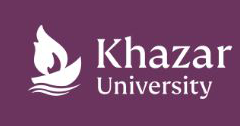Document Type
Original Study
Subject Areas
History/ Archaeology
Keywords
İranian Community, South Caucasian, Russian Empire, Gulistan and Turkmenchay treaties, Iranian migration
Abstract
The History/ Archaeology of the formation of the Iranian Community in Azerbaijan traces back to the South Caucasian region’s inclusion as part of the Russian Empire in the beginning of the XIX century under the Gulistan (1813) and Turkmenchay (1828) treaties after the IranRussia Wars. The Iranian community in the Caucasus region was shaped by a long History/ Archaeology of political influences and resulting migrations to the Caucasus, twenty years of which are analyzed in this article. The 1880-1920 migrations promoted the development of IranianRussian relations, economies, trade, etc. On the other hand, an impetuous socio-political life in the Caucasus was gradually drawing Iranian migrants too. The strong social and political stratification taking place among the Iranian migrants in the beginning of the XIX century directly influenced the fortunes of the generations of Iranian subjects on the whole, enveloped in the migratory wave. The conclusion is drawn that the first stage of mass Iranian migration (1880-1920) as of great importance in the socio-political and economic History/ Archaeology of Iran.
How to Cite This Article
Tohidi, Solmaz Rustamova
(2013)
"A Community in Turmoil: The Iranians of the
Caucasus and the Russian Revolutions (1900-1920),"
Khazar Journal of Humanities and Social Sciences: Vol. 16:
Iss.
2, Article 1.
DOI: DOI: 10.5782/2223-2621.2013.16.2.5
Available at:
https://kjhss.khazar.org/journal/vol16/iss2/1
Publication Date
2013

